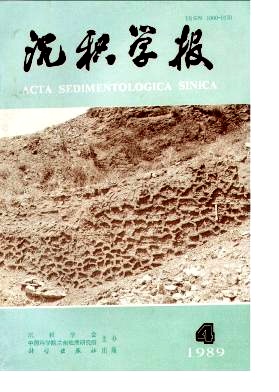CRETACEOUS-TERTIARY PALAEOGEOGRAPHY OF THE EAST CHINA SEA
- Received Date: 1987-07-25
- Publish Date: 1989-12-10
Abstract: Tectonically the widely extensive East China Sea is considerably complex. It not only has a braod shelf, but also has a famous epi-Pacific system of trench-arc-trough. The sea is a new frontier with a significant hydrocarbon potential. Nevertheless, in the past, the stratigtaphy, the geological ccolution and tectonics of the East China Sea were less understood, they were merely conjuctured by the geological data of surrounding areas and islands.Until now, there is no relatively detailed palaeogeographic analysis.Recently, with the advance of petroleum exploration, the stratigraphic sequences of individual tectonic units can be established by a combination of the Seismic-stratigraphy, records of several wells, and the biostratigraphy of many neighboring islands.Thus a series of Cretaceous-Tertiary palaeogeograpohic maps (including Cretaceous, Paleocene, Eocene, Oligocene, Miocene and Pliocene) can be made, and the palaeogeographic changes of the East China Sea can be analysed. Based on the drililing data in raiwan and the southern part of the East China Sea, as well as Cretaceous outcrops with many fossil in the eastern Zhejiang province, the author proposes that Ihe area of Cretaceous transgression is extensive, and the Cretaceous strata most likely become a significant petroliferous formation in the East China Sea. Recently the extensive Paleocene is also proved by the data of exploration wells in Taiwan and offshore areas, as well as the interpretation of seismic-stratigraphy .The Eocene marine fades as a global extensive transgression naturally occupied a more extensive region.However, the Oligocene sedimentary area was reduced due to the influence of Puli movement, whereas the continental facies was increased.According to the series of maps composed by the author, during Paleogcne, the characteristic of the East China Sea is marine in the south part and land in the north part, i.e. the south of the latitude where Winzhou city located was a sea area with developed marine facies, whereas the north of it was dominated by continental facics.During Miocene, the shelf basin of the East China Sea had a trend of uplifting, thus a terrestrial deposit occupied most of the shelf.During Pliocene, an extensive transgression also occured in the East China sea, its north part reached the border between Huanghai and the East China Sea, and the west part approached the present coast.It is almost the same as the modern morphology of the East China Sea. According to the palaeogeographic evolution, therefore the diITerentiation bcl^vccn the south part and the north pari is quite obvious.During Cretaceous-Tertiary a terrestrial environment had persisted a relatively long time in the north part of the East China Sea, while the south part of the East China Sea and Taiwan had been a marine environment with the features o「 epicontinental sea basin-open shallowsea, until Miocene, relatively deep-water troughs under the extensional setting occured in the Okinawa trough.therefore the author consider, in terms of a palaeogeographic analysis, during Cretaceous-Terliary Ihe shelf of the shelf of lhe East China Sca is mainly a continenlal Craton basin.May be only since Miocene, a tectonic framework o「an i」Live continental margin has been formed at the eastern border of lhe East China Sea. In addilion, the author also briefly describe a model of PalaeoclimaUc evolution from a viewpoint of geological history.
| Citation: | Chen Yiheng. CRETACEOUS-TERTIARY PALAEOGEOGRAPHY OF THE EAST CHINA SEA[J]. Acta Sedimentologica Sinica, 1989, 7(4): 69-76. |






 DownLoad:
DownLoad: